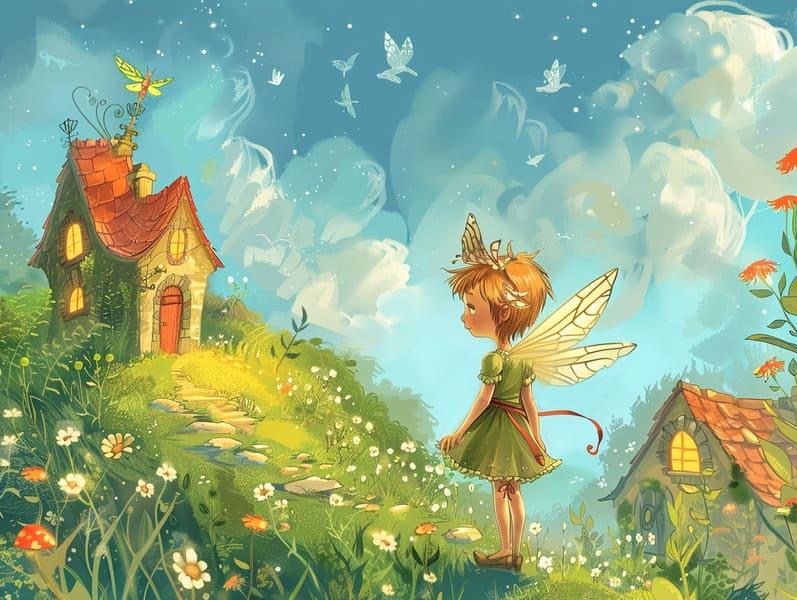The Creation of Fairy Tales and Its Ageless Elegance.
The Creation of Fairy Tales and Its Ageless Elegance.
Blog Article

Children's fairy tales have old origins. These narratives have been narrated from one generation to the next millennia before they were ever written down. They originated from a variety of backgrounds, including European traditions. They were initially passed along among adults, often carrying themes and messages reflective of the societal norms and beliefs of the time.
Jacob and Wilhelm Grimm, Jacob and Wilhelm, were among the first to collect many of these beloved stories. Their compilation, "Grimm's Folk Tales," included tales like "The True Bride," "Hansel and Gretel," and "Schneewittchen," which have since become pillars in the world of traditional fairy tales. Similarly, Andersen's delightful tales, such as "The Mermaid's Tale," and "The Little Duckling," have captured hearts worldwide, solidifying their place in the pantheon of treasured fairy tales.
Despite their age, fairy tales remain as meaningful as ever, especially as children's bedtime stories. These magical stories are now available in different formats, including vividly illustrated books, enchanting animations, and online storybooks.
Their lasting presence can be connected to several fascinating points:
Crucial Morals: Ancient fairy tales often convey important moral lessons. Stories like "The Story of the Boy Who Cried Wolf" teach the merit of integrity, while "The Hare and the Tortoise" stress the traits of resolve and meekness. These tales offer children clear distinctions between correct and incorrect, helping to shape their moral compass in a mild yet deep way.
Compassion and Insight: Timeless fairy tales frequently portray heroines facing problems and hurdles, inciting children to relate with their struggles and rally behind their triumphs. For instance, "The Tale of Beauty and the Beast" highlights the benefit of seeing beyond the surface to see the true nature of a person, advancing perception and awareness.
Cultural Insights: Many classic fairy tales are saturated in the cultural contexts from which they were born. Reading these stories can provide intriguing perspectives into different historical contexts, strengthening a sense of global awareness and respect.
Inventiveness and Imagination: The mythical elements in old fairy tales—enchanted lands—awaken children’s visions and dreams. These fairy tales carry readers get more info to magical realms, revitalizing fantastical thinking and a sense of mystery that lasts a lifetime.
Timeless fairy tales are not only whimsical but also instructive. They provide bewitching tools in strengthening various thinking and feeling skills in young ones. When timeless fairy tales are told out loud, they improve linguistic abilities by teaching new vocabulary and complicated sentence structures. This practice also fosters auditory skills and mindfulness, as young ones listen intently, anticipating to see what happens next.
Furthermore, examining the themes and characters of classic fairy tales can sharpen thinking skills and analytical skills. The young are taught to discern patterns, anticipate outcomes, and know cause and effect. These examinations also assist young ones articulate their thoughts and feelings, enhancing their emotional intelligence.
In today’s digital age, the abundance of web-based fairy tales has made these tales more reachable than ever. Digital sites and online apps make available ample collections of bedtime fairy tales that can be browsed or listened to anytime, anywhere. Fairy tales spoken are particularly liked, sharing an enjoyable way for children to immerse in these entrancing tales. Voice books and read-out-loud stories bring characters and settings to life, often augmented by spellbinding musical scores and soundtracks that heighten the storytelling experience.
The unfading fascination of old fairy tales lies in their ability to adjust to modern days while keeping their essential themes. Contemporary revisions of these tales often incorporate more inclusive characters and modern settings, making them meaningful to today’s audience. However, the central morals of spirit, compassion, and righteousness remain unchanged, continuing to impact readers of all ages.
Ancient fairy tales also offer a sense of familiarity and familiarity. They provide a structured narrative with a transparent beginning, middle, and end, often ending with the resolution of conflicts and the triumph of virtue over vice. This certainty can be solacing for the young, making available a sense of solidity in an always shifting world.
Classic fairy tales continue to captivate and train new generations, maintaining their captivation and importance in modern society. As children's night stories, they render accessible a perfect blend of wonder and wisdom, facilitating moral values, empathy, and creativity. The prevalence of digital fairy tales and the popularity of fairy tales spoken assure that these old narratives remain accessible to new generations.
By retaining and passing on these narratives, we continue to honor the rich tapestry of creativity and cultural heritage. Whether you are discovering a colorful picture book, viewing a internet collection, or playing an spoken story, the elegance of old fairy tales is always within reach. These stories point out of the unending strength of fairy tales and its ability to tie us across centuries and lands.
Regardless if you are enjoying a vibrantly illustrated book, browsing a online library, or listening via an narrated book, the majesty of famous fairy tales is always within reach.
These stories reveal of the timeless nature of tales and its ability to hold us together across centuries and lands, weaving a spell that fascinates and enlightens alike.